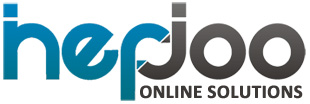Are you looking to improve your performance in Google Ads? If so, you’re in the right place!
We’ll explore optimization strategies that can help you maximize your return on investment. By optimizing for sales instead of just conversions, using Google’s ValueTrack parameters, and analyzing keywords and placements, you can identify the best performing options.
We’ll also discuss the importance of Google Ads account organization, landing page optimization, and campaign monitoring.
Get ready to take your Google Ads performance to the next level!
Key Takeaways
- Optimize for sales, not just conversions, by using Google’s ValueTrack parameters
- Utilize Single Keyword Ad Groups (SKAGs) to improve relevancy and performance
- Focus on optimizing landing pages, as they are the deciding conversion factor
- Continuously monitor and optimize campaigns to maximize ROI
What Are Optimization Strategies?
Optimization strategies are techniques that you can implement to improve the performance of your Google Ads campaigns. By utilizing these strategies, you can benefit from increased sales, improved conversion rates, and higher return on investment.
However, implementing these strategies may come with some challenges. One of the main challenges is tracking and analyzing data to gain actionable insights. It can be overwhelming to sift through a large amount of data and identify the most valuable information.
Another challenge is optimizing landing pages to maximize conversion rates. This process requires continuous testing and refinement to ensure that your landing pages are effective in driving conversions.
Despite these challenges, the benefits of optimization strategies far outweigh the implementation difficulties. They can significantly enhance the success of your Google Ads campaigns.
Aspects of Optimization Strategies
To improve your Google Ads performance, focus on tying sales data to keywords and placements to identify the highest performing ones. This will help you optimize your campaign and increase your return on investment (ROI).
Here are some optimization techniques and effective bid management strategies to consider:
- Constantly monitor and optimize your campaigns based on data-driven insights. This will allow you to make informed decisions and improve your campaign performance.
- Implement A/B testing to test different strategies and identify the most effective ones. This will help you refine your approach and maximize your conversions.
- Regularly review and adjust your campaign settings to align with your business goals. This will ensure that your ads are reaching the right audience at the right time.
By implementing these optimization techniques and effectively managing your bids, you can improve your Google Ads performance and achieve better results.
Don’t forget to regularly analyze your data and make adjustments as needed to stay ahead of the competition.
Concepts and Keywords
When analyzing your campaign data, focus on identifying the most effective concepts and keywords to optimize your Google Ads. Conduct thorough keyword analysis to understand which keywords are driving the most conversions and delivering the best results. By tracking conversions, you can measure the success of your keywords and make data-driven decisions to optimize your ad performance.
Conversion tracking is crucial in understanding the effectiveness of your campaigns. It allows you to track the actions that users take after clicking on your ads, such as making a purchase or filling out a form.
By analyzing conversion data, you can identify which concepts and keywords are driving the highest conversion rates and allocate your budget accordingly. This information will help you refine your targeting strategy and focus on the concepts and keywords that generate the most valuable results for your business.
Strategies and Techniques for Optimizing Performance
Focus on analyzing conversion data to identify the most effective concepts and keywords that drive high-performance results for your campaigns. By utilizing optimization techniques and performance improvement strategies, you can maximize the effectiveness of your Google Ads campaigns.
Optimize for sales, not just conversions, by using Google’s ValueTrack parameters and tying sales data to keywords and placements. Revise the existing CPA objectives and adopt a more assertive bidding strategy for keywords that exhibit superior sales conversion rates. Use ValueTrack parameters to track lifetime customer value and optimize for long-term profitability.
Additionally, utilize Single Keyword Ad Groups (SKAGs) to improve relevancy and performance. Test landing pages more aggressively and use A/B testing to improve campaign performance.
Continuously monitor and optimize campaigns, conduct competitive analysis, and optimize offers based on conversion data. By implementing these strategies, you can drive high-performance results and maximize your return on investment.
Case Studies: Real-Life Examples of Successful Optimization Strategies
By analyzing real-life case studies, you can gain valuable insights into successful optimization techniques and see how they have driven impressive results for various businesses.
Conversion tracking and bid optimization are two key strategies that have proven to be effective in improving Google Ads performance.
Conversion tracking allows you to track and measure the actions taken by users on your website after they click on your ads. This data provides valuable insights into the effectiveness of your campaigns and helps you optimize your bidding strategy.
Bid optimization involves adjusting your bids for keywords based on their performance and value. By analyzing data such as conversion rates and cost per acquisition, you can make informed decisions on how much to bid for each keyword to maximize your return on investment.
Incorporating these strategies into your Google Ads campaigns can lead to higher conversion rates and improved overall performance.
Importance of Testing: A/B Testing for Optimization Strategies
Improve your conversion rates and overall success by incorporating A/B testing into your optimization approach.
A/B testing, also known as split testing, is a powerful technique that allows you to compare two versions of a webpage or an ad to determine which one performs better. By conducting A/B tests, you can identify the most effective elements and make data-driven decisions to optimize your optimization strategies.
The benefits of A/B testing in optimization strategies are numerous. It helps you understand your audience better, as you can analyze their preferences and behaviors.
It also allows you to test different variables, such as headlines, calls to action, and visuals, to find the optimal combination that drives the highest conversion rates. Additionally, A/B testing provides actionable insights that can be used to refine your campaigns and improve your overall performance.
To conduct successful A/B tests in your optimization strategies, there are a few best practices to follow. First, clearly define your goals and metrics to measure success. Next, test one variable at a time to accurately assess its impact.
It’s also important to ensure your sample size is statistically significant for reliable results. Lastly, continuously monitor and analyze the data to iterate and optimize your strategies based on the insights gained from the tests.
Incorporating A/B testing into your optimization strategies can lead to significant improvements in your conversion rates and overall success. By following best practices and leveraging the benefits of A/B testing, you can make informed decisions, optimize your campaigns, and achieve better results.
A/B testing, also known as split testing, is a marketing experiment where two different versions of a campaign or a piece of content are tested on your audience to discern which performs better. In other words, version A is shown to some of your audience and version B is shown to the others.
Importance of Testing: A/B Testing for Optimization Strategies
Frequently Asked Questions
How Can ValueTrack Parameters Be Used to Track Lifetime Customer Value and Optimize for Long-Term Profitability?
To track lifetime customer value and optimize for long-term profitability, use ValueTrack parameters. Track conversions, optimize landing pages, and focus on improving conversion rates. This data-driven approach will help you maximize your ROI and drive long-term success.
What Are Some Examples of Non-Actionable Data to Avoid Tracking in Google Ads Optimization?
Don’t waste time tracking non-actionable data in Google Ads optimization. Focus on valuable insights that drive results. Identify what data is actionable and use it to make informed decisions for optimal performance.
How Can Single Keyword Ad Groups (Skags) Improve Relevancy and Performance in Adwords?
Single Keyword Ad Groups (SKAGs) improve relevancy and performance in AdWords by ensuring each ad group focuses on a single keyword. This increases ad relevance, click-through rates, and Quality Scores, leading to higher conversions. Effective strategies can also include alternative ad group structures and ad copy testing.
What Are Some Effective Ways to Optimize Landing Pages for Better Conversion Rates?
To optimize landing pages for better conversion rates, focus on mobile responsiveness and utilize persuasive copywriting techniques. Ensure your landing pages are visually appealing, load quickly, and have clear call-to-action buttons. Test and iterate to continuously improve your conversion rates.
How Can Competitive Analysis Be Used to Inform Bidding Strategy and Stand Out From Competitors in Google Ads?
To inform your bidding strategy and stand out from competitors in Google Ads, conduct bidding strategy analysis and competitor differentiation. Analyze their keywords, adjust your bidding accordingly, and constantly innovate to stay ahead.
Final Thoughts
Now that you understand the importance of A/B testing for optimizing your Google Ads performance, let’s dive into some final thoughts.
One of the key benefits of long-term optimization strategies is the ability to continuously improve your campaigns and drive better results over time. By regularly monitoring and optimizing your campaigns, you can maximize your return on investment and achieve long-term profitability.
However, it’s important to acknowledge the limitations of optimization techniques. While data-driven insights and testing can provide valuable insights, they are not a guarantee of success. Optimization strategies should be used as a guide, but it’s crucial to remember that every business is unique and what works for one may not work for another.
Ultimately, it’s essential to find the right balance between optimization techniques and creativity. Combine data-driven insights with innovative ideas to stand out from the competition and deliver exceptional value to your prospects. Continuously refine and adapt your strategies to stay ahead in the ever-evolving world of digital advertising.

